The Collector is CRTP’s weekly transportation news roundup, published every Friday. We focus on North Coast news, but we also include relevant state, national and international transportation news – plus other items that we just find kind of interesting! You can submit items for consideration, or just enjoy the news collection!
Humboldt Regional Climate Action Plan Adopted!
The Collector
December 19, 2025
Editor’s Note: The Collector will be on a winter break for the next few weeks. We’ll be back in the New Year!
Humboldt Regional Climate Action Plan Adopted!
On Tuesday, the Humboldt County Board of Supervisors officially adopted the Regional Climate Action Plan after nearly eight years under development. We appreciate that the supervisors made some changes to address our concerns about the plan’s definition of infill development (although we have yet to see the text of those changes). We also saw some progress addressing our concerns about greenhouse gas thresholds for new projects, with the supervisors adopting thresholds that are slightly more reasonable than what was recommended by the Planning Commission, but still not as ambitious as they should be.
In fact, “some progress, but not as ambitious as it should be” would be a reasonable way to sum up the whole Regional Climate Action Plan. The plan commits to much-needed new programs and reforms in transportation, land use, energy, and other areas. This marks the first time that some local agencies – notably the County of Humboldt itself – have made such meaningful commitments. However, it was supposed to be a ten-year plan starting in 2020, and the long delays mean the region now has only 4 years (until 2030) to follow through. And many of the plan’s goals are not very ambitious – for example, to increase walking and biking in urban areas from the current 9% of trips up to just 12%. So the new plan developed in 2030 will have to include much more aggressive measures in order to reach the state’s target of carbon neutrality by 2045.
It’s also worth noting that the plan is intended to be implemented not just by the county, but also by all seven local cities and several other agencies. All of these partners must now adopt the plan. The real work won’t start until that happens, after which a Regional Climate Committee will be formed and staff hired to work on it. CRTP will be monitoring the situation closely.
Parking, Parking, Parking
Parking was the theme of the Arcata City Council meeting this week. The Council established a parking permit system on Eye Street to address concerns about student parking spillover from the new Hinarr Hu Moulik dorms. This simple action provides a good illustration of how parking problems do not need to be addressed with more parking – they can be much more effectively addressed through good management.
The bulk of conversation at the meeting, however, was focused on Cal Poly Humboldt’s plan to build a massive new parking lot on Foster Avenue in the Arcata Bottoms. In contrast to the parking permit system, this plan represents the worst way to respond to perceived parking shortages: by paving over yet more land in a vain effort to meet parking “demand.” In fact, the university revealed Wednesday that they eventually plan to build a mind-boggling 1,000 parking spaces on the site.
The university has many options for better managing its parking problems – some of which are called for in its own climate action plan – and an expensive parking study the university commissioned a few years ago explicitly advised against building new parking. But the administration has so far ignored its own plans and expert advice, refusing to implement new parking management strategies and instead opting to pursue costly, destructive, and unnecessary new parking construction.
We should acknowledge that a Cal Poly representative also announced on Wednesday a needed trail connection to fill the gap between segments of Foster Avenue. Unfortunately, the benefits of this small improvement for bicyclists and pedestrians will be completely overshadowed by the impacts of the massive expanses of asphalt to be built just a few steps away.
Comment Period Still Open for Regional Transportation Plan
Humboldt’s Regional Transportation Plan contains more ambitious and science-based policies and targets than the Regional Climate Action Plan. But a new version being circulated for public comment backs away from previous commitments to urgently needed climate progress.
From removing the phrase “climate crisis” to delaying commitments to build climate-friendly infill housing, purchase zero-emission vehicles, and develop EV charging stations, the new plan would be a step backward for the region. Most concerning, the new plan would remove any commitment to funding projects that are actually consistent with the plan’s own goals for climate action and transportation safety.
The public comment period is open until December 29th. If you haven’t commented yet, we encourage you to take the official survey on the plan, and then to email Humboldt County Association of Governments (HCAOG) Board members and tell them to increase their commitment to climate action rather than abandoning their ambitions. You can find Board members’ emails here.
Here are some specific things you could say:
- Restore the use of the phrase “climate crisis” throughout the Regional Transportation Plan. Language matters, especially when it comes to important plans and policies.
- Don’t reverse climate progress. Keep existing targets for climate action, including climate-friendly infill housing. We need climate action now, not five years from now.
- Ensure that future funding decisions prioritize HCAOG’s own climate and safety goals. A plan is nothing more than words on paper if it doesn’t influence future decisions!
News from Beyond the North Coast
Rural Transit Would Be Hit Hard by Trump Cuts
The Trump administration’s proposal to cut almost all federal funding for public transit would hit rural areas like the North Coast particularly hard. Small rural transit agencies tend to rely much more heavily on federal funding than agencies in bigger metro areas.
Trump Administration Wants Dirtier Buses
There’s really no other way to say it. Faced with administering a congressionally mandated grant program to fund low-emission and zero-emission buses, the administration provided almost no funding for zero-emission buses. Instead, they poured money into the dirtiest vehicles that could fit the definition of “low-emission.”
The Collector is CRTP’s weekly transportation news roundup, published every Friday. We focus on North Coast news, but we also include relevant state, national and international transportation news – plus other items that we just find kind of interesting! To submit items for consideration, email colin@transportationpriorities.org.
There’s Still Time to Weigh in on Regional Climate and Transportation Plans
The Collector
December 12, 2025
There’s Still Time to Tell Humboldt County Supervisors to Adopt a Robust Climate Action Plan
The Humboldt County Board of Supervisors is slated to adopt the Regional Climate Action Plan next Tuesday, and you can still weigh in! CRTP is joining our environmental allies in asking the supervisors to approve the plan, after making a few key changes. Here are our specific requests:
- Adopt greenhouse gas thresholds at the original levels recommended by the consultant, and reject the Planning Commission’s attempt to weaken this key standard for projects that aren’t compliant with the plan. (Check out EPIC’s great explanation of this issue here.)
- Ensure that only low-emission infill development projects will be considered compliant with the plan, so that high-emission rural developments aren’t exempted from analyzing and mitigating their climate impacts.
- Adopt and implement the plan without delay and without weakening it.
You can find a lot more detail in the letter CRTP and EPIC submitted to the Supervisors. We encourage CRTP’s supporters to email the Supervisors (you can find their emails here), and attend the Board of Supervisors meeting next Tuesday (December 16th), starting at 9:00 am in the Board of Supervisors Chamber, Humboldt County Courthouse, 825 Fifth Street, Eureka.
Take Action: Transportation Is at the Heart of the Climate Crisis
The Regional Climate Action Plan isn’t the only regional plan currently under consideration that will have a big effect on climate pollution. Transportation accounts for nearly three-quarters of local greenhouse gas emissions, which means Humboldt County’s Regional Transportation Plan is also crucial for the future of climate action in our region.
This plan is updated every four years by the Humboldt County Association of Governments (HCAOG), which is governed by a Board of representatives from the county and all seven of its incorporated cities. Unfortunately, the latest draft of the plan backs away from previous commitments to urgently needed climate progress.
Shockingly, HCAOG is actually proposing to remove all uses of the phrase “climate crisis” from the draft plan, suggesting a troubling lack of understanding of the seriousness of climate change and the urgency of action. And it’s not just the language that has been changed. The new draft also kicks the can down the road by delaying commitments to build climate-friendly infill housing, purchase zero-emission vehicles, and develop EV charging stations.
Even worse, HCAOG is proposing to remove from the plan any commitment to ensuring that the projects they fund are actually consistent with their own goals for climate action and transportation safety.
With the federal government aggressively undermining climate action and trying to ensure the crisis only gets worse, local communities need to step up now more than ever. We can’t let our county and our cities backslide on climate at this critical moment in history.
We encourage everyone to take HCAOG’s official survey on the plan, and then to email HCAOG Board members and tell them to increase their commitment to climate action rather than abandoning their ambitions. You can find Board members’ emails here.
Here are some specific things you could say:
- Restore the use of the phrase “climate crisis” throughout the Regional Transportation Plan. Language matters, especially when it comes to important plans and policies.
- Don’t reverse climate progress. Keep existing targets for climate action, including climate-friendly infill housing. We need climate action now, not five years from now.
- Ensure that future funding decisions prioritize HCAOG’s own climate and safety goals. A plan is nothing more than words on paper if it doesn’t influence future decisions!
If you want to dive deeper, you can review the draft Regional Transportation Plan, read the official comments submitted by CRTP and our environmental allies, or read recent local media coverage of the issue. Comments are due by December 29th.
Housing Wins and Warning Signs
Walkable, transit-friendly, affordable housing in Eureka got two big boosts this week. First, the Sunset Heights affordable housing project, on the bluff above Broadway between Harris and Henderson Streets, secured a $21.7 million state grant. The money will not only allow the construction of 43 affordable homes near jobs and services, it will also pay for improved transit service as well as bike and pedestrian safety upgrades to some of the neighborhood’s most dangerous streets. CRTP is proud to have helped facilitate this grant application and excited to announce that a small portion of the funding will help us develop a new program at CRTP.
In breaking news today, we have also learned that the Humboldt Transit Authority and Danco have officially received the final funding needed for construction of the Eureka Regional Transportation and Housing Center (EaRTH Center), the long-awaited downtown transit hub with 45 affordable homes built right on top!
While we celebrate these wins for infill housing, we are also tracking warning signs that the county may be planning for more car-dependent, climate-wrecking sprawl. At their meeting this Tuesday, Humboldt County supervisors approved a grant application that, among other things, would fund studies of “improvements necessary to support potential subdivision and development along the Walnut Drive corridor between Cutten and Ridgewood.” Development in this area would have very little potential for walkability, bikeability, or high-quality transit – in other words, it would be sprawl. We will be advocating strongly for the county to support new housing in more sensible locations like Myrtletown and McKinleyville.
Trails! Trails! Trails!
Next Tuesday, the Great Redwood Trail Agency will be holding a virtual public meeting about its Master Plan for the future development of the trail from San Francisco Bay all the way around Humboldt Bay to Fairhaven. You can register for the meeting here, and submit questions in advance using this form.
Meanwhile, the Humboldt County Board of Supervisors took another step this week toward maintaining a crucial piece of existing trail infrastructure. The Hammond Trail bridge over Baduwa’t (Mad River) provides a safe connection between McKinleyville and Arcata for bicyclists and pedestrians, but is old and considered seismically vulnerable. Funding to replace it was secured by Congressman Jared Huffman two years ago, and on Tuesday the supervisors hired a consultant to develop engineering and environmental plans for the project.
Are We Really Still Doing the Big Box Thing?
According to media reports this week, Wal-Mart is in the process of buying the old K-Mart property on Broadway in Eureka. The property owner had previously agreed to sell the property to the county for a new permitting center, but apparently backed out after receiving an offer from Wal-Mart.
Wal-Mart stores are the epitome of car-dependent corporate development, with infamously large parking lots and predatory business practices. There’s a reason “big box” stores are not allowed in Arcata or the future McKinleyville Town Center. Why is Eureka still allowing, and even encouraging, this kind of development?
News from Beyond the North Coast
California’s Legislators Fail to Prioritize Transportation Safety
A new CalMatters investigation shows that, when presented with the fact that 40,000 people have died on California’s roads in the last decade and the number keeps rising, state legislators completely ignored this accelerating epidemic and decided instead to discuss issues like homeless encampments on state highways. It’s a stunning example of the lack of political will that is undermining efforts to eliminate traffic deaths. We know how to stop the carnage. The solutions – from better road design to intelligent speed assistance in vehicles – are well documented, and where governments invest in them, they work. But we will never make progress if our leaders keep ignoring the problem.
Statewide Task Force Recommends Transit Reforms
The California Transit Transformation Task Force has been meeting for the last two years. The group, created by a state law in 2023, was charged with charting a path forward to ensure robust and effective transit systems across the state, and determining how to avoid the fiscal crises facing many big systems. The task force’s official report has now been published. Among other things, it calls for new funding sources for transit and freeing transit operators from onerous state restrictions. Some of the recommendations can be implemented by transit agencies and local governments, but most will require the state legislature to take action.
About That Traffic Study…
When changes to local road or street designs are proposed, it’s usually not long before someone calls for a “traffic study.” Not unreasonably, people feel that we should know what will happen to car traffic after a project is built, and a study sounds like an official and scientific way to find out. But it turns out that most of the models used to conduct these studies are deeply flawed and fail to account for some of the most basic principles in transportation planning.
If You Build It, They Will Come
We’ve long known that building more highway lanes doesn’t alleviate congestion in the long term. Instead, it results in more people driving and filling up the lanes again, so congestion ends up at about the same level it was before. Recent research confirms that this phenomenon – called induced travel – happens with even small “congestion-reducing” projects, like adding a turn lane at an intersection. And it also applies to people walking and biking. Build more bike lanes, sidewalks, and trails, and people will walk, bike and roll more!
The Collector is CRTP’s weekly transportation news roundup, published every Friday. We focus on North Coast news, but we also include relevant state, national and international transportation news – plus other items that we just find kind of interesting! To submit items for consideration, email colin@transportationpriorities.org.
Tell Humboldt County Supervisors to Adopt a Robust Climate Action Plan
The Collector
December 5, 2025
Tell Humboldt County Supervisors to Adopt a Robust Climate Action Plan
Nearly 8 years after Humboldt County began work on a Regional Climate Action Plan – years in which global climate pollution kept rising and the impacts of climate change became more and more severe – the Board of Supervisors is finally poised to adopt it. Through all these years, CRTP has been advocating for a robust plan that meets the urgency of the climate threat and tackles the region’s biggest source of climate pollution: transportation.
Almost three-quarters of the climate pollution covered by the plan comes from transportation. That means that upgrading our local infrastructure and services, and changing our land use rules, to make low-carbon options like walking, biking, rolling, and riding the bus safer, easier, and more appealing are keys to the plan’s success.
CRTP has been advocating for almost 8 years to get a plan adopted that is robust and ambitious enough to meet the urgent challenge of climate action. The current plan is far from perfect, but we will be relieved to see it adopted. After adoption, a regional climate action committee will be set up and new staff will be hired, setting the stage for more focused and ambitious climate action than we have seen in the past.
The supervisors are scheduled to vote on the plan on December 16th, and written comments are due next Thursday (December 11th). We are joining our environmental allies in asking the supervisors to approve the Regional Climate Action Plan, after making a few key changes. Here are our specific requests:
- Adopt greenhouse gas thresholds at the original levels recommended by the consultant, and reject the Planning Commission’s attempt to weaken this key standard for projects that aren’t compliant with the plan. (Check out EPIC’s great explanation of this issue here.)
- Ensure that only low-emission infill development projects will be considered compliant with the plan, so that high-emission rural developments aren’t exempted from analyzing and mitigating their climate impacts.
- Adopt and implement the plan without delay and without weakening it.
We encourage CRTP’s supporters to submit a written comment by emailing cob@co.humboldt.ca.us by next Thursday, email your County Supervisor (you can find out who your Supervisor is here and find their email here), and attend the Board of Supervisors meeting on December 16th, starting at 9:00 in the Board of Supervisors Chamber, Humboldt County Courthouse, 825 Fifth Street, Eureka.
Eureka Town Hall on Designs for Density
There is an urgent need for more homes in our region, and limited options for where to build them. The City of Eureka is developing new zoning rules to allow more homes to be built in city limits, and next Monday, the city will be hosting a Town Hall to hear public input on what those homes should look like.
Attendees of the events held this week with national street and community design experts came away with some ideas that could be applied in Eureka. Dan Burden, Victor Dover, and Josh Meyer reviewed local streets and buildings and presented evidence for the overwhelming health, safety, and economic benefits of slow streets, walkable neighborhoods, and beautiful public spaces.
CRTP strongly supports denser infill development, which has many benefits over sprawl, from community building and increased safety to greater affordability and environmental protection. If you’re a Eureka resident, we encourage you to attend next Monday’s Town Hall and have your say!
Driver Strikes Pedestrian on 4th Street
Last Wednesday, a vehicle struck a pedestrian at 4th and C Streets in Eureka. Public information about the crash is extremely limited, but it appears that the victim was seriously injured. As CRTP documented in our recent report, all of 4th and 5th Streets are dangerous for pedestrians, and some of our point-of-view videos documenting pedestrian and bicyclist experiences in the corridor include this very intersection.
The intersection of 4th and C Streets is directly between the Bayview Heights supportive housing complex for homeless veterans and the office of a veterans services organization, and very close to other important destinations including the North Coast Co-op and Tri-County Independent Living. Despite high usage by pedestrians and other vulnerable road users, there is no signal or other protection for crossing pedestrians at this intersection, or any other intersection for blocks in either direction. CRTP continues to call for a major safety overhaul of 4th and 5th Streets to prevent crashes like this from continuing to happen.
CRTP Publishes Annual Update
CRTP has done a lot this year! Even if you’re a regular reader of The Collector, you may have missed some of our many accomplishments, large and small. Check out our 2025 Annual Update to get the details on some of the most notable things we did this year, from securing millions of dollars in annual funding for local transit to celebrating the long-awaited completion of the Humboldt Bay Trail.
We rely on community support to do this work, and we’d love to have you as a member! Click here to join CRTP or renew your membership.
News from Beyond the North Coast
Heavier Vehicles Kill More Pedestrians and Bicyclists
New research adds to the evidence that bigger, heavier vehicles – especially vans and pick-up trucks – are more likely to kill pedestrians and bicyclists. Interestingly, the analysis found SUVs to be less likely to kill vulnerable road users, but note that this result could be explained by incomplete data, the fact that SUVs tend to be newer and therefore have more safety features, or the wide variety of SUV weights and designs.
Why We Are Failing to Reduce Traffic Deaths
The Washington Post has published a damning investigation into the rise of traffic deaths in the US in recent years, particularly among pedestrians and bicyclists, at the same time that American government agencies at all levels have adopted the goal of eliminating traffic deaths (Vision Zero). As the Post details, this dismal failure is a result of lack of funding, lack of political will, and backlash from drivers who prioritize speed over safety.
Are E-Bikes Really the Problem?
As the epidemic of traffic deaths continues unabated amid indisputable evidence of the dangers of large vehicles, some in politics and in the media are ignoring this crisis and focusing instead on the relatively minor safety threat posed by irresponsible e-bike riders. CRTP supports reasonable e-bike regulations, but not onerous rules that would force people back into cars (which are more dangerous by far), or limit the mobility of nondrivers. Like transportation safety advocates nationwide, we are concerned that the moral panic over e-bikes is leading the American public to ignore the real safety threats on our streets.
The Collector is CRTP’s weekly transportation news roundup, published every Friday. We focus on North Coast news, but we also include relevant state, national and international transportation news – plus other items that we just find kind of interesting! To submit items for consideration, email colin@transportationpriorities.org.
Memo to Local Governments: Climate Change Is a Crisis
The Collector
November 21, 2025
Dangerous Downtown Streets: Another View of Biking Across 4th and 5th Streets
Imagine you’re cruising down I Street on your bike, heading toward downtown in the new buffered bike lane. Then you get to 6th Street, and suddenly you have to cross two turn lanes and merge with busy car traffic to reach your destination. Click here to watch a video of just this experience. Afterwards, you can also click here to watch all the other point-of-view videos we’ve produced documenting the experiences of pedestrians and bicyclists in the 4th & 5th Street corridor.
After you watch, you can read our full 4th and 5th Street safety report. And if you’d like to report a safety concern in the corridor to Caltrans, click here and scroll down to “Safety Concern” in the “Situation Type” menu. We also encourage everyone to continue making Street Story reports, so that concerns are publicly documented.
Memo to Local Governments: Climate Change is a Crisis
The Board of the Humboldt County Association of Governments (HCAOG) is made up of representatives from the County of Humboldt and all seven of its incorporated cities. At a Board meeting this Thursday, these representatives made several decisions that suggest a troubling lack of urgency in their approach to addressing the climate crisis.
Most prominently, the Board discussed a proposal to completely remove the phrase “climate crisis” from the new version of the Regional Transportation Plan. Some Board members expressed their belief that climate change is in fact a crisis, while others thought the word “crisis” is overused. Apparently those folks didn’t think that one of the biggest existential threats in the history of humanity merits the term. Regardless of the individual views they expressed, Board members voted unanimously to publicly release the new draft plan with the word “crisis” removed.
Scientists and government bodies around the world have identified climate change as a global crisis. At a time when the US government is actively undermining climate action, our local responsibility to act on the crisis is greater than ever. And transportation is our biggest source of climate pollution.
Of course, while language is important, actions speak louder than words. And the new draft Regional Transportation Plan provides more for climate advocates to be worried about. For example, it calls for delaying critical targets for building walkable housing, reducing vehicle miles traveled, and building electric vehicle charging stations. This comes at the same time that HCAOG continues to move forward with a regional housing plan that fails to adequately discourage climate-wrecking sprawl.
Perhaps most troubling of all, HCAOG continues to resist any policy that would hold it accountable to its own climate and safety targets when deciding which local transportation projects to fund. In fact, the draft Regional Transportation Plan the Board voted to release on Thursday eliminates a prior commitment to track the effects of its funded projects on things like climate and safety.
At the same meeting, Board members rebuffed CRTP’s request to adopt a policy to ensure that funded projects are consistent with its own stated goals on issues like the climate crisis. Instead, they approved funding for several projects with no such analysis. And they did so after we explained to the Board in detail that one of the approved projects – a large, complex roundabout in Fortuna – will, as designed, result in increased driving and unsafe conditions for people walking and biking, contrary to HCAOG’s own goals.
Stay tuned for more information about how we are pushing back against these troubling developments. In the meantime, you can take HCAOG’s survey about the Regional Transportation Plan update to express your opinions.
NEW DATE: Family-Friendly Bike Ride This Saturday Using New McKinleyville Protected Bike Lanes!
Last weekend’s planned bike ride in McKinleyville was postponed due to the weather, but we’ve rescheduled it for Saturday (tomorrow!). Join us for a slow-paced, family-friendly bike ride celebrating the new protected bike lanes and beautiful murals on Hiller Road! You can choose either a short ride starting at Hiller Park, or a slightly longer ride starting at the Mad River Trailhead. The current forecast calls for rain on Sunday, but we’ll only be canceling for heavy rain or major stormy conditions. Light rain won’t stop us!
We’ll depart from the Mad River Trailhead at 11:00 am and head toward Hiller Park, using the Hammond Trail. We’ll stop at Hiller Park at around 11:20 am to pick up folks who are starting their ride there, and then head up Hiller toward Central Avenue. After using the new eastbound protected bike lane on Hiller, we’ll stop near Central to check out the new murals, then head back using the westbound protected bike lane. The ride will end around noon at Seagoat Farm Stand with free hot tea and the opportunity to buy some snacks at the farm stand. People of all ages and abilities are welcome.
Whether you can join us for the ride or not, we also encourage all community members to take this county survey to provide feedback about the project.
Walk Audits, Bike Audits, and Community Meetings!
The Humboldt County Association of Governments (HCAOG) does a lot of important work, and CRTP often works with them to advance our priorities for safe, sustainable, equitable transportation. In this edition of The Collector, we’ve strongly criticized what we see as backsliding by HCAOG. CRTP will always call out such problems at local agencies. But we will also always support them when they are trying to do the right thing.
The week after Thanksgiving, HCAOG is bringing internationally recognized experts Dan Burden and Victor Dover to Humboldt for a series of walk audits, bike audits, and community meetings to promote “vibrant, walkable/rollable, livable neighborhoods.” This is an important effort to educate the public and local decision-makers about safe and sustainable transportation.
Monday, December 1st will feature a walk and bike audit in Hoopa. On Tuesday, December 2nd, there will be walk and bike audits in Arcata and Eureka, and a community meeting in McKinleyville. On Wednesday, December 3rd, the visit will conclude with a regional community workshop in Eureka. Check out the full schedule here and mark your calendar for as many events as you can!
Indianola Undercrossing Partially Complete
Local media were buzzing this week about the fact that the Indianola undercrossing on US-101 between Eureka and Arcata opened for car traffic, following decades of planning and development work. If we were in charge, we would have designed a different safety project for this location. Nevertheless, the new undercrossing will undoubtedly improve safety for motorists, and that’s a really good thing. However, bicyclists and pedestrian take note: while the overpass is now carrying car traffic, the part of the project that will provide access under the highway, to and from the new Humboldt Bay Trail, has not yet been completed.
You Can Still Report Your Unmet Transit Needs
Several local agencies – including the City of Arcata – held their annual Unmet Transit Needs hearings this week. But if you missed those meetings, you can still report your unmet needs! Submit your comments by taking HCAOG’s survey or emailing your comments directly to HCAOG.
News from Beyond the North Coast
Trump Administration Proposes to Eliminate Federal Transit Funding
The Trump administration has been slashing previously approved funding for transit projects since it took office in January. Now, the administration is taking its attack on transit to a new level, proposing to completely eliminate the main source of federal funding for transit agencies, while at the same time prohibiting states from using any highway funds for transit. If this proposal is approved by Congress, it would, as Transportation for America says, “annihilate state and local transportation budgets.”
The Collector is CRTP’s weekly transportation news roundup, published every Friday. We focus on North Coast news, but we also include relevant state, national and international transportation news – plus other items that we just find kind of interesting! To submit items for consideration, email colin@transportationpriorities.org.
HCAOG Tackles Transportation and Housing Plans, Plus Road Project Funding
The Collector
November 14, 2025
Dangerous Downtown Streets: Access for People With Disabilities
As part of our series of point-of-view videos from Eureka’s 4th and 5th Streets, our friends at Tri-County Independent Living toured the intersection outside their office to highlight some of the difficulties faced by their clients and staff. Click here to watch the short video. Afterwards, you can also click here to watch all the other point-of-view videos we’ve produced documenting the experiences of pedestrians and bicyclists in the 4th & 5th Street corridor.
After you watch, you can read our full 4th and 5th Street safety report. And if you’d like to report a safety concern in the corridor to Caltrans, click here and scroll down to “Safety Concern” in the “Situation Type” menu. We also encourage everyone to continue making Street Story reports, so that concerns are publicly documented.
There’s Still Time to Vote for CRTP!
Voting ends Sunday in the North Coast Co-op’s annual contest to choose recipients of the Seeds for Change register round-up program. Organizations selected for the program will receive donations next year from Co-op customers who “round up” their purchases at the register. This is a really important opportunity to support CRTP’s work! If you’re a Co-op member and you haven’t voted yet, please click here to vote for CRTP, or vote in person at one of the Co-op stores. We also encourage voting for our friends and allies at EPIC, Humboldt Waterkeeper, Friends of the Eel River, and Affordable Homeless Housing Alternatives.
HCAOG Tackles Transportation and Housing Plans, Plus Road Project Funding
The Board of Directors for the Humboldt County Association of Governments (HCAOG) meets next Thursday, and they have a lot of big topics to discuss, including:
- Regional Housing Plans: The state has directed our region to plan for 5,962 new homes in the next 8 years, and HCAOG decides how many of those homes will be in cities like Eureka and Arcata, and how many in lower-density areas like the unincorporated county. This decision will help determine whether we see sprawl or walkable development, and it has big implications for affordability, public health, economic development, and the climate. CRTP and other local environmental groups have been advocating for a policy that encourages walkable development, but HCAOG is poised to adopt an allocation methodology that fails that test. You can read our full comments here.
- Regional Transportation Plan: Every four years, HCAOG updates the official 20-year transportation plan for the Humboldt County region. The existing plan has strong safety, climate, and equity goals that CRTP helped develop four years ago, and we’re grateful that HCAOG is proposing to keep most of them. However, some of the changes that are proposed are totally unacceptable, like eliminating the words “climate crisis” from the document and watering down targets for development of walkable housing.
- Project Funding Decision: Every two years, HCAOG gets some new transportation dollars from the state and decides which local projects to fund. For years, the agency has inexplicably been refusing to apply its own goals and policies (like those in the Regional Transportation Plan) to its decisions about project funding, instead relying on informal negotiations between the county and the cities with no consistent decision-making standards. They are poised to do it again next week, including providing significant funding for a roundabout project in Fortuna that, as designed, will result in increased driving and unsafe conditions for people walking and biking, contrary to HCAOG’s own goals and policies.
CRTP will be at the HCAOG Board meeting next Thursday to keep up the fight for safe, sustainable, and equitable transportation and walkable infill housing. You can join the meeting as well, either online or in person, or email your comments ahead of time.
Family-Friendly Bike Ride This Sunday Using New McKinleyville Protected Bike Lanes!
Join CRTP this Sunday for a slow-paced, family-friendly bike ride celebrating the new protected bike lanes and beautiful murals on Hiller Road! You can choose either a short ride starting at Hiller Park, or a slightly longer ride starting at the Mad River Trailhead. The current forecast calls for rain on Sunday, but we’ll only be canceling for heavy rain or major stormy conditions. Light rain won’t stop us!
We’ll depart from the Mad River Trailhead at 11:00 am and head toward Hiller Park, using the Hammond Trail. We’ll stop at Hiller Park at around 11:20 am to pick up folks who are starting their ride there, and then head up Hiller toward Central Avenue. After using the new eastbound protected bike lane on Hiller, we’ll stop near Central to check out the new murals, then head back using the westbound protected bike lane. The ride will end around noon at Seagoat Farm Stand with free hot tea and the opportunity to buy some snacks at the farm stand. People of all ages and abilities are welcome.
Whether you can join us for the ride or not, we also encourage all community members to take this county survey to provide feedback about the project.
Humboldt County Surpasses 1,500 Reports on Street Story!
Humboldt County residents have used the Street Story platform to make more than 1,500 reports of hazards, near-misses, crashes, and safe places on local streets, roads and highways since CRTP introduced it to the region in 2019 in collaboration with UC Berkeley’s Safe Transportation Research and Education Center (SafeTREC).
If you’ve never used Street Story, it’s an online platform that allows anybody to report where they feel safe or unsafe on the street, or where they’ve had a crash or a near-miss. It’s free and easy to use, and it only takes a couple of minutes to make a report. Click here to make a report on Street Story.
Data from Street Story are publicly available and can be used by members of the public as well as agencies, community groups, and the media. CRTP uses Street Story reports to help advocate for safety improvements for people walking and biking on the streets. Many other local agencies refer to Street Story reports too, including Caltrans District 1, the City of Arcata, and the County of Humboldt.
An analysis of the first five years of Street Story reports in Humboldt County was conducted last year by CRTP and can be found here. To review all existing Humboldt County reports on Street Story, click here.
Report Your Unmet Transit Needs
Every year, HCAOG is required by state law to solicit public comments on unmet transit needs. The agency then decides whether requests made by the public meet the definition of “unmet needs” and whether they are reasonable to meet. If so, the Humboldt Transit Authority is required to plan to meet the needs.
In addition to the other items on its packed agenda next week, the HCAOG Board will hold its annual hearing on unmet transit needs. If you’re a bus rider with needs to report, we encourage you to let the Board know. If you miss that meeting, the City of Eureka is also holding its unmet transit needs hearing next week, as is the City of Arcata. You can also email your comments to HCAOG. No matter how you submit your comments, they all end up with HCAOG in the end.
News from Beyond the North Coast
World Day of Remembrance
Sunday is the annual World Day of Remembrance for Road Traffic Victims. More than 50 million people have been killed and hundreds of millions injured by drivers of cars and trucks since automobiles were introduced over a century ago, and the numbers keep rising. The World Day of Remembrance encourages us to reflect on this raging global pandemic, and take action to stop it.
States Should Be Held Accountable for Road Safety Results
The federal government requires states to adopt targets for road safety, but there are no consequences for failing to meet those targets. In fact, the targets themselves can be anything the states want, and many states have official safety targets of increasing the number of people killed and injured on their roads and highways! Advocates are asking the federal government to actually hold states accountable for improving road safety, which could result in revolutionary changes in transportation planning nationwide. However, with the Trump administration actively defunding many safety plans and projects, we aren’t holding our breath for a positive reaction.
What’s More Important: Fares or Reliability?
Public transit should be both affordable and reliable. But if there’s not enough money to reduce or eliminate fares while also increasing frequency and reliability, which should be the priority? Given the chronic underfunding of US transit agencies, this is a dilemma most of them confront every time they develop a budget.
The Collector is CRTP’s weekly transportation news roundup, published every Friday. We focus on North Coast news, but we also include relevant state, national and international transportation news – plus other items that we just find kind of interesting! To submit items for consideration, email colin@transportationpriorities.org.
Eureka Transit & Housing Center Moving Forward!
The Collector
November 7, 2025
Dangerous Downtown Streets: Biking Across 4th & 5th Streets
It’s clearly unsafe to bike on 4th and 5th Streets, so few people do. People who need to bike along these streets typically ride on the sidewalk for their own safety. However, lots of people have to cross these streets on their bikes to get to their destinations. To get a sense of that experience, check out this video from the point of view of one bicyclist navigating downtown Eureka. Sometimes there’s a convenient gap in traffic that allows a bicyclist to cross, but visibility is frequently limited, and often you have to wait a long time. You can also click here to watch all the other point-of-view videos we’ve produced documenting the experiences of pedestrians and bicyclists in the 4th & 5th Street corridor.
After you watch, you can read our full 4th and 5th Street safety report. And if you’d like to report a safety concern in the corridor to Caltrans, click here and scroll down to “Safety Concern” in the “Situation Type” menu. We also encourage everyone to continue making Street Story reports, so that concerns are publicly documented.
Vote for CRTP!
Voting is underway in the North Coast Co-op’s annual contest to choose recipients of the Seeds for Change register round-up program. Organizations selected for the program will receive donations next year from Co-op customers who “round up” their purchases at the register. This is a really important opportunity to support CRTP’s work! If you’re a Co-op member, please click here to vote for CRTP (starting Monday), or vote in person at one of the Co-op stores. We also encourage voting for our friends and allies at EPIC, Humboldt Waterkeeper, Friends of the Eel River, and Affordable Homeless Housing Alternatives. Voting ends Sunday, November 16th.
Family-Friendly Bike Ride Using New McKinleyville Protected Bike Lanes!
Join CRTP on Sunday, November 16th for a slow-paced, family-friendly bike ride celebrating the new protected bike lanes and beautiful murals on Hiller Road! You can choose either a short ride starting at Hiller Park, or a slightly longer ride starting at the Mad River Trailhead.
We’ll depart from the Mad River Trailhead at 11:00 am and head toward Hiller Park, using the Hammond Trail. We’ll stop at Hiller Park at around 11:20 am to pick up folks who are starting their ride there, and then head up Hiller toward Central Avenue. After using the new eastbound protected bike lane on Hiller, we’ll stop near Central to check out the new murals, then head back using the westbound protected bike lane. The ride will end around noon at Seagoat Farm Stand with free hot tea and the opportunity to buy some snacks at the farm stand. People of all ages and abilities are welcome. Heavy rain cancels.
Whether you can join us for the ride or not, we also encourage all community members to take this county survey to provide feedback about the project.
Eureka Transit & Housing Center Moving Forward!
The Eureka Regional Transit and Housing Center (EaRTH Center) will provide a much-needed downtown transit hub to coordinate local and regional bus routes as well as services like bikeshare. It also includes commercial space on the ground floor and 45 new affordable housing units on upper floors. A joint project of the Humboldt Transit Authority (HTA), the City of Eureka, and Danco, the EaRTH Center received all of its regulatory approvals long ago, but has been waiting on crucial tax credit financing to support the affordable housing part of the project. At HTA’s board meeting this week, staff announced that this funding is finally on its way! A formal schedule has not yet been announced, but construction may begin as soon as next spring.
Local E-Bike Voucher Program Out of Cash for Now
The Redwood Coast Energy Authority’s popular e-bike voucher program, which provides $400-$1,000 toward the purchase of a qualifying e-bike, has run out of money again. This is frustrating news for those hoping to purchase an e-bike, but the extremely high level of interest is a good sign for our community! E-bikes enable people to replace more car trips and can increase active mobility for seniors and many others. If you’re interested in getting a voucher from RCEA to help pay for an e-bike, you can still fill out the application to get on the wait list.
Driver Kills Person Walking on Highway 96
We extend our condolences to the family of Jason McCullough, an Arcata resident who was struck and killed by a driver on Highway 96 in Hoopa last week. We do not know many details about this crash or the victim. But we do know that it occurred on the Hoopa Valley Reservation, and that Native people in the US are far more likely than any other group to be killed while walking. This grim statistic is thought to be the combined result of high poverty rates, which result in many people without access to a vehicle, and a lack of safe pedestrian infrastructure in Indian country.
McCullough was killed while walking on a highway that is the only way to get to most destinations in Hoopa, but lacks any kind of pedestrian infrastructure. Given this context, we find it strange and insensitive that the California Highway Patrol press release described McCullough as walking on the highway “for unknown reasons,” and implied that he may have been walking while intoxicated (which, unlike intoxicated driving, is not illegal).
News from Beyond the North Coast
Tell CARB to Permanently Fund E-Bike Vouchers
The California Air Resources Board took years to roll out a small amount of funding for e-bike vouchers to help lower income Californians buy e-bikes. When the vouchers were finally available, they were wildly popular, and the program ran out of vouchers almost immediately. But now, inexplicably, CARB is cancelling the program and transferring the remaining funding to a program that supports purchases of electric cars.
E-bikes are much more affordable and have a much smaller environmental impact than any kind of car. The evidence shows they help people replace car trips with bike trips, and that people are eager to make that change! Tell CARB to permanent fund e-bike incentives rather than canceling this popular and effective program.
Transportation Issues Play Key Role in Mamdani Victory
On Tuesday, New York City voters elected Zohran Mamdani as the city’s next mayor in a historic election that has been the focus of significant national media attention. Mamdani’s promise of “fast and free” buses has grabbed headlines (and received some criticism), but he is also known as a cyclist who has pledged to improve New York’s bike infrastructure. New York is unique among American cities, but transportation innovations there often end up being copied around the country eventually, so we’ll be watching to see how Mamdani follows through on his campaign pledges.
Communities for Kids
Kids make up the biggest share of nondrivers in most communities, but are often forgotten when it comes to transportation planning. Kids benefit greatly from independent mobility and safe places to play, but are extremely vulnerable to being hurt or killed by drivers. And experts point out that designing communities to be safe and fun places for kids also makes them safe and fun for everyone else!
The Collector is CRTP’s weekly transportation news roundup, published every Friday. We focus on North Coast news, but we also include relevant state, national and international transportation news – plus other items that we just find kind of interesting! To submit items for consideration, email colin@transportationpriorities.org.
Walking on 4th & 5th Streets at Night
The Collector
October 31, 2025
Dangerous Downtown Streets: 4th & 5th Streets at Night
If you’ve never walked around Eureka’s 4th and 5th Streets at night, check out this video produced by CRTP. The level of comfort and safety you feel as a pedestrian can change dramatically after dark. You can also click here to watch all the other point-of-view videos we’ve produced documenting the experiences of pedestrians and bicyclists in the 4th & 5th Street corridor.
After you watch, you can read our full 4th and 5th Street safety report. And if you’d like to report a safety concern in the corridor to Caltrans, click here and scroll down to “Safety Concern” in the “Situation Type” menu. We also encourage everyone to continue making Street Story reports, so that concerns are publicly documented.
Vote for CRTP!
Voting begins Monday in the North Coast Co-op’s annual contest to choose recipients of the Seeds for Change register round-up program – and CRTP is on the ballot! Organizations selected for the program will receive donations for one month next year from all Co-op customers who “round up” their purchases at the register. For CRTP, these donations would go a long way toward covering our annual expenses! If you’re a Co-op member, please click here to vote for CRTP (starting Monday), or vote in person at one of the Co-op stores. Voting ends Sunday, November 16th.
Complete Streets Policies at Work
Long-time readers of The Collector may recall that, several years ago, CRTP worked hard to get the cities of Eureka and Arcata to adopt official Complete Streets policies. These policies require that whenever a construction project affects a city street, it must include accommodations for people walking, biking, and using public transit (along with the typical car infrastructure). Since these policies were adopted, they haven’t always been implemented perfectly. But there’s no denying they’re having an effect!
This year, for example, in order to comply with its Complete Streets policy, the City of Eureka added new striping, signage, sidewalks, curb ramps, and other bike and pedestrian improvements to its annual pavement rehabilitation project – all without any need for advocacy from CRTP. The improvements covered by Complete Streets policies aren’t big, flashy projects, and we often have disagreements about how they are designed and implemented. But collectively, over time, they can make a big difference.
A Life Is More Important Than a Traffic Jam
This week, another life was lost on a local highway, this time in a crash near Rio Dell. We are disturbed that headline writers commonly focus on the traffic implications of such crashes, rather than the life that was lost. We understand that drivers want to know about conditions on the road. But when the media present the loss of life as a second-tier concern, it only perpetuates cultural apathy around preventable traffic deaths.
Holiday Card Art Contest!
CRTP’s friends over at Tri-County Independent Living have launched their 2025 Holiday Card Competition. Individuals with disabilities are invited to send in their entries by November 21st to be entered in the competition for cash prizes. The first place winner will receive $100! All entries will also be entered into the larger grand prize drawing with a prize of either a chromebook or a tablet. This year TCIL will be opening the competition to all age groups, with a youth category for kids 12 and under. Click here to enter the contest, or contact jessica@tilinet.org for more information.
News from Beyond the North Coast
Something Really Scary for Halloween
For generations, urban legends have abounded about the supposed dangers of kids accepting dangerous candy from malicious strangers. While there is no factual basis for these legends, that doesn’t mean Halloween is totally safe for kids. In fact, Halloween is by far the most dangerous day of the year for young pedestrians, with one 2018 study finding that 4- to 8-year-old kids are 10 times more likely to be hit and killed by drivers on Halloween than any other day of the year. The risk to kids is heightened when, as this year, Halloween falls on a weekend, since drivers are more likely to be intoxicated.
Threats to Freedom of Movement in Indian Country
The crisis of Missing and Murdered Indigenous Women and Girls (MMIWG) isn’t commonly thought of as a transportation problem, but advocates point out that transportation plays a role. For example, the lack of safe places to walk, bike, or ride public transit can sometimes trap women and girls in dangerous situations.
Climate Pollution Keeps Rising
New data from the United Nations shows that 2024 was both the hottest year on record and also marked the highest levels of greenhouse gas emissions on record. In the United States, transportation is the leading source of climate-changing pollution.
The Collector is CRTP’s weekly transportation news roundup, published every Friday. We focus on North Coast news, but we also include relevant state, national and international transportation news – plus other items that we just find kind of interesting! To submit items for consideration, email colin@transportationpriorities.org.
McKinleyville Town Center Ordinance Approved!
The Collector
October 24, 2025
Dangerous Downtown Streets: Accessibility Expert Crosses 4th Street
Recently, accessibility expert and CRTP Board member Peggy Martinez was kind enough to put on a camera and document a little bit of what it’s like to navigate Eureka’s 4th and 5th Streets (US-101) as a blind person. One of the results is this video, which begins at 4th & B Streets and lasts for the full ten minutes it took just to get to a safe crossing point and get across the street! You can also click here to watch all the other point-of-view videos we’ve produced documenting the experiences of pedestrians and bicyclists in the 4th & 5th Street corridor.
After you watch, click here to read our full 4th and 5th Street safety report. And if you’d like to report a safety concern in the corridor to Caltrans, click here and scroll down to “Safety Concern” in the “Situation Type” menu. We also encourage everyone to continue making Street Story reports, so that concerns are publicly documented.
McKinleyville Town Center Ordinance Approved!
On Monday, the Humboldt County Board of Supervisors approved the McKinleyville Town Center ordinance, including a Central Avenue safety redesign! We’re grateful to the McKinleyville Municipal Advisory Committee and many others for their hard work on this ordinance over the last 6 years.
We’re especially grateful to all of CRTP’s members and supporters who participated in this process. Our collective education and advocacy efforts ensured that the future Town Center will be more walkable and bikeable in all sorts of ways, including:
- Future homes will be built more densely and mixed with commercial and civic space, putting more destinations within walking distance.
- Instead of buildings set back behind massive parking lots, parking will be limited and located in shared lots behind buildings, and buildings will feature pedestrian-friendly frontage designs.
- A transit center will eventually be built, along with a network of paved trails and car-free spaces.
- Two lanes of Central Avenue will be repurposed for protected bike lanes, dramatically increasing safety and comfort for people walking, biking, and rolling. New sidewalks, landscaping, and traffic calming features will also be added.
- Protected bikeways, sidewalks, landscaping, and traffic calming features will be added to Hiller Road.
This is a major milestone in the history of Humboldt County’s third largest community. We’re excited to see the Town Center take shape in the years to come!
Hiller Road Quick-Build Safety Improvements Taking Shape
The Hiller Road quick-build safety project is under way, with protected bike lanes almost complete between Central Avenue and McKinleyville Avenue. Last weekend, local mural artists and community volunteers created beautiful asphalt art in the bike lane buffers and other available spaces. Changes to the intersection of McKinleyville Avenue and Hiller Road are expected soon, along with another mural.
While the county is paying for the road improvements, the mural expenses are being funded entirely from crowdfunded donations. Money is still needed to make sure the mural artists are compensated fairly for their work! Click here to donate.
Obscure But Important Rule Adopted by Humboldt Supervisors
The California Environmental Quality Act (CEQA) requires the transportation impacts of new development projects to be assessed in terms of how much they increase or decrease people’s driving, a measurement transportation nerds call vehicle miles traveled, or VMT. But until this week, Humboldt County had no standard for determining when a change in VMT was “significant.” On Tuesday, the Board of Supervisors adopted an official rule: transportation impacts of a development will be deemed significant if future residents or employees can be expected to drive 85% or more of the current average for all other county residents.
CRTP had asked for a significance threshold set at 75% of average, because California’s statewide climate plan requires a 25% reduction in VMT. We also advocated for setting separate baselines for urban and rural parts of the county, because people have such different driving habits in these areas. We’re disappointed the Supervisors didn’t take up these suggestions. But we’re grateful that they rejected the other option under consideration, which was to exclude residents of the county’s towns and cities – who generally drive less – from the calculation. Doing that would have resulted in an artificially high threshold.
If your eyes have glazed over at this point, here’s why this is important: When an impact is “significant” under CEQA, the law requires a project to adopt mitigation measures to reduce the impact. And when it comes to VMT, mitigation measures include things like bike and pedestrian infrastructure and improved transit service. In other words, the new significance threshold will have a big impact on future funding for safe, sustainable, and equitable transportation improvements in the county.
Eureka C Street Bike Boulevard Getting Closer to Completion
This week, the City of Eureka took the next steps toward completion of the C Street Bike Boulevard by designating certain blocks as one-way and changing some intersection configurations. The new bike boulevard features pairs of one-way streets in opposite directions, but allows two-way bike travel the whole way. The opposing one-way streets are an important design feature that reduces the amount and speed of car traffic, making biking safer while still preserving local car access.
The bike boulevard was funded by a $2.2 million state grant from the highly competitive and chronically underfunded Action Transportation Program. Meanwhile, Caltrans just announced more than a hundred million dollars in new state and federal funding for repairs and other projects on the state highway system on the North Coast. We’d never suggest that there aren’t urgently needed repairs on the state highway system, but there is an ongoing and striking funding discrepancy between safety projects – especially for people walking and biking – and projects to maintain and enhance highways for vehicles.
More Reflections on the Week Without Driving
The latest episode of the EcoNews Report features EPIC Executive Director Tom Wheeler, CRTP Executive Director Colin Fiske, and Humboldt County Supervisor Natalie Arroyo reflecting on experiences during this year’s Week Without Driving. Check it out!
News from Beyond the North Coast
CalBike Tackles the E-Bike Controversy
Here at CRTP, we’re big fans of e-bikes. They get people on bikes who otherwise wouldn’t or couldn’t bike, and they make it easier for people to replace car trips with bike trips. But just like any technology, e-bikes can be misused, and unfortunately a moral panic has developed in recent years about the supposed threats posed by speeding e-bikes. CalBike has now convened a statewide working group to study the issues around e-bikes and other electric mobility devices and make recommendations for policy solutions.
Why Do Fire Departments Block Street Safety Improvements?
It is all too common in the United States for fire departments to object to basic street safety interventions, from speed bumps to bike lanes. That’s despite the fact that car and truck crashes account for the large majority of incidents fire departments respond to in most areas. A new study reviews the reasons for these conflicts, and suggests some solutions.
The Collector is CRTP’s weekly transportation news roundup, published every Friday. We focus on North Coast news, but we also include relevant state, national and international transportation news – plus other items that we just find kind of interesting! To submit items for consideration, email colin@transportationpriorities.org.
McKinleyville Town Center Faces Final Vote Monday
The Collector
October 17, 2025
Dangerous Downtown Streets: A 6-Year-Old’s Perspective
In conjunction with the release of CRTP’s new report on safety on Eureka’s 4th & 5th Streets (US-101), CRTP also produced point-of-view videos using wearable cameras, documenting the experiences of pedestrians and bicyclists in the 4th & 5th Street corridor. One of these videos features the perspective of a 6-year-old navigating the streets with his parent. If it’s been a while since you thought about how a kid might navigate a street like this, it’s worth a watch.
After you watch, click here to read our full report. And if you’d like to report a safety concern in the corridor to Caltrans, click here and scroll down to “Safety Concern” in the “Situation Type” menu. We also encourage everyone to continue making Street Story reports, so that concerns are publicly documented.
Supervisors to Decide McKinleyville Town Center Ordinance on Monday
The new zoning rules for the future McKinleyville Town Center have been scheduled for a final hearing before the Humboldt County Board of Supervisors on Monday at 9 am. Opponents are working hard to block key elements of the ordinance, especially the Central Avenue lane reduction that is so important for community safety and for the Town Center’s success.
If you live, work, shop, or play in McKinleyville, please consider attending Monday’s meeting if you can. If you can’t attend the meeting, you can email the Board of Supervisors today and ask them to adopt the Town Center ordinance as written, including the Central Avenue lane reduction. Even if you’ve contacted the Board about this issue before, please consider emailing them again! They need to hear that there is broad support for these changes in the community.
Help Paint Murals on Hiller Road This Weekend!
The Hiller Road quick-build safety project is under way, and this weekend local mural artists will be adding beautiful asphalt art to the bike lane buffers and other areas. Click here for more information on the mural art and artists.
On Sunday, there’s even an opportunity for community members to contribute a small amount ($15) to the project and take part in the painting! Sign up here to participate.
Supervisor Steve Madrone Named 2025 Responsible Transportation Champion
CRTP has named Humboldt County District 5 Supervisor Steve Madrone as the 2025 North Coast Responsible Transportation Champion. The annual award is given to local people who further CRTP’s mission of “promoting transportation solutions that protect and support a healthy environment, healthy people, healthy communities and a healthy economy on the North Coast.”
Madrone is being recognized for his decades-long commitment to safe, functional infrastructure for people walking, biking, and rolling, as well as for his work to support improved public transit, increased transit investment, and transit-friendly development, including the McKinleyville Town Center. Madrone is especially well known for his tireless work over the course of many years to build the popular Hammond Trail.
Regional Climate Action Plan Heading to Supervisors
Thursday evening, the Humboldt County Planning Commission recommended approval of the Regional Climate Action Plan, which covers the county and all of its incorporated cities. Thanks to the advocacy of CRTP and our members and supporters, the commissioners made a key change to the plan, applying transit-friendly infill development standards countywide.
Almost three-quarters of the climate pollution covered by the plan comes from transportation. That means that upgrading our local infrastructure and services, and changing our land use rules, to make low-carbon options like walking, biking, rolling, and riding the bus safer, easier, and more appealing are keys to the plan’s success.
CRTP has been advocating for almost 8 years to get a plan adopted that is robust and ambitious enough to meet the urgent challenge of climate action. The current plan is far from perfect, but we are relieved to see it finally moving toward adoption. After it is adopted, a regional climate action committee will be set up and new staff will be hired, setting the stage for more focused and ambitious climate action than we have seen in the past.
Weigh in on the Future of Humboldt County Transportation
Every four years, state law requires regions to update their long-term Regional Transportation Plans. Humboldt County’s new plan is due next January, and the Humboldt County Association of Governments (HCAOG) is preparing now. On Monday evening at 5:30 pm, HCAOG will be holding a public workshop in McKinleyville to gather input on the plan. You can also provide your input by clicking here and taking a brief survey.
CRTP is a fan of Humboldt County’s current plan, which includes ambitious “Safe and Sustainable Transportation Targets” for cutting climate pollution and increasing transportation safety. CRTP and our supporters worked hard to ensure these targets were included in the current plan, and we’ll be advocating to keep them in the new plan – and to make sure we actually make progress toward meeting those targets, too.
Where We Build Housing Matters
The Humboldt County region is about to make a big decision about where we should plan for future housing to be built in the next 8 years – in cities like Eureka and Arcata, or in lower-density areas like the unincorporated county. The decision will help determine whether we see sprawl or walkable development, and it has big implications for affordability, public health, economic development, and the climate. Check out a new op-ed by CRTP and other local environmental groups about this issue, then click here to learn more and get ready for upcoming public hearings.
News from Beyond the North Coast
Newsom Signs Important Transportation Bills
Monday was the last day for the governor to sign or veto bills passed by the California legislature, and he waited until the last minute to sign several important transportation bills. Among the bills which will now become law are: AB 382, which allows local governments to lower school zone speed limits to 20 mph, or even 15 mph in some cases; SB 71, which exempts most bike, pedestrian, and transit projects from environmental review, as long as they are built in existing rights-of-way; AB 266, which will keep breathalyzers installed indefinitely in the cars of people convicted of two DUIs; SB 720, which will modernize red light camera rules; and AB 289, which will allow Caltrans to deploy a limited number of speed cameras in work zones.
New Technology Could Help Prevent Drunk Driving
In 2021, Congress directed the National Highway Traffic Safety Administration to require technology that prevents drunk driving in all new cars. The agency has not yet followed through on that mandate. However, newly developed technology that makes it much easier to detect driver intoxication is now commercially available and being shared with automakers, and at least one influential organization has said it will start incorporating anti-drunk driving technology in its vehicle safety ratings. Drunk drivers are responsible for a large share of fatal and serious injury crashes in the United States.
More Driveways Result in More Dangerous Streets
A new study has found that on urban streets, a higher number of driveways accessing buildings and parking lots is associated with a higher number of crashes, especially crashes involving bicyclists and pedestrians. The finding is important but not surprising, as driveways introduce conflict points for people on sidewalks and in bike lanes, and drivers entering and exiting them are often distracted.
The Collector is CRTP’s weekly transportation news roundup, published every Friday. We focus on North Coast news, but we also include relevant state, national and international transportation news – plus other items that we just find kind of interesting! To submit items for consideration, email colin@transportationpriorities.org.
Dangerous Downtown Streets
The Collector
October 10, 2025
Dangerous Downtown Streets
This week, CRTP published a new report entitled “Dangerous Downtown Streets: Safety Problems and Solutions for Eureka’s 4th & 5th Street Corridor (US-101).” The report identifies safety hazards for pedestrians, bicyclists, bus riders, and motorists by reviewing official police-reported crash data, Street Story reports, and the findings from our recent walk and bike audits in the corridor.
Despite representing only about 0.2% of the county’s road miles, the corridor has been the site of 18% of the county’s pedestrian fatalities and serious injuries in the last decade, meaning the rate of pedestrian fatalities and serious injuries per mile is 90 times the county average. The corridor also sees 4% of all bicyclist serious injuries (20 times the county average) and 3% of motorist serious injuries and fatalities (15 times the county average). The walk and bike audits and Street Story reports confirm that, along with Broadway, this is one of the most dangerous corridors in the region, especially for people walking and biking.
In conjunction with the release of the report, CRTP has also produced point-of-view videos using wearable cameras, documenting the experiences of pedestrians and bicyclists in the 4th & 5th Street corridor. These include videos from perspectives that are often underrepresented, including a child and people with disabilities.
The South Broadway Complete Streets Project currently under construction is a good start toward making the US-101 corridor in Eureka safer for everyone. At CRTP, we continue to advocate for Caltrans to fund and build the other two planned safety projects that will improve the rest of Broadway right away. But this other part of the corridor—4th and 5th Streets—is also very dangerous, and can’t be ignored.
Click here to read the full report. If you’d like to report a safety concern in the corridor to Caltrans, click here and scroll down to “Safety Concern” in the “Situation Type” menu. We also encourage everyone to continue making Street Story reports, so that concerns are publicly documented.
First Hearing Next Week for Regional Climate Action Plan
Humboldt County officially began work on its Regional Climate Action Plan way back in 2018. After numerous delays, mistakes, and false starts, the plan is finally scheduled for its first formal adoption hearing before the county’s Planning Commission next Thursday.
Almost three-quarters of the climate pollution covered by the plan comes from transportation. That means that upgrading our local infrastructure and services, and changing our land use rules, to make low-carbon options like walking, biking, rolling, and riding the bus safer, easier, and more appealing are keys to the plan’s success.
At CRTP, we have been advocating all along to make sure the plan is robust and ambitious enough to meet the urgent need, and there are still changes we think should be made to improve it. But we are also relieved to see it finally moving toward adoption and implementation, and looking forward to having an official regional committee and dedicated local government staff devoted solely to climate action.
McKinleyville Town Center Ordinance Heads to Supervisors
The new zoning rules for the future McKinleyville Town Center have been scheduled for a final hearing before the Humboldt County Board of Supervisors on Monday, October 20th at 9 am. While the hearing is still more than a week away, written comments must be sent to the county by next Wednesday to be officially included in the agenda packet.
Opponents are still trying to block key elements of the ordinance, especially the Central Avenue lane reduction that is so important for community safety and for the Town Center’s success. But this ordinance is the result of six years of public meetings and community engagement, and shouldn’t be changed at the last minute because of a few loud voices. We’ll be working hard to ensure the Central Avenue safety overhaul and other key provisions remain in the ordinance when it’s adopted.
What Did Local Leaders Learn from the Week Without Driving?
The Week Without Driving is over, but many of the lessons learned will stick with participants for a long time. 66 people officially participated in Humboldt County, including elected officials, public agency staff, and other community leaders. Click here to read some of the reflections they shared from their experiences.
People Are Using the Humboldt Bay Trail!
The first numbers are in from trail counters along the newly opened Humboldt Bay Trail, and it’s official: a lot people are using it! County data show hundreds of bicyclists and dozens of pedestrians using the trail every day, and Arcata trail counts show that bicyclist usage more than tripled between May and July on the city’s part of the trail. It all goes to show: when you give them half a chance, people really want to bike, walk, and roll more!
News from Beyond the North Coast
Republican Funding Bill “Not So Clean” for Transportation
Since before the federal government shutdown began, Congressional Republicans have been calling their funding bill “clean,” meaning it continues existing funding levels without making any policy changes. But transportation advocates point out that official funding and policies don’t mean much as the Trump administration continues to eliminate safety, bike, pedestrian, and transit programs it doesn’t like, and ignores funding already appropriated by Congress for these purposes.
Caltrans Can Now Lower Speed Limits More Easily
The traditional method for setting speed limits in the United States relies on measuring existing driving speeds, and rewards speeders by increasing the limit when people drive faster. Thankfully, several new California laws in recent years have made it somewhat easier to lower speed limits in certain situations. Until now, though, these laws have applied only on local streets and roads. A bill authored by the North Coast’s own Assemblymember Chris Rogers and just signed by Governor Newsom will extend this flexibility to state highways, allowing Caltrans to lower some speed limits, especially on surface streets like Broadway, 4th and 5th Streets in Eureka.
Federal Government Delays Pedestrian Safety Rules for Vehicles
The official “five-star” safety rating system in the United States has only ever considered the safety of vehicle occupants – never the safety of pedestrians, bicyclists, or even the occupants of other vehicles a driver might hit. A change to that system initiated under the Biden administration would finally incorporate some pedestrian safety testing into the rating system. But the auto industry complained and asked for a delay, and the Trump administration has now given it to them.
Self-Driving? Really?
Should a car company be able to say its vehicles are “self-driving” when they still require a human driver for safety? And when they can’t recognize and respond safely to a bicyclist? We don’t think so, and neither does CalBike.
The Collector is CRTP’s weekly transportation news roundup, published every Friday. We focus on North Coast news, but we also include relevant state, national and international transportation news – plus other items that we just find kind of interesting! To submit items for consideration, email colin@transportationpriorities.org.

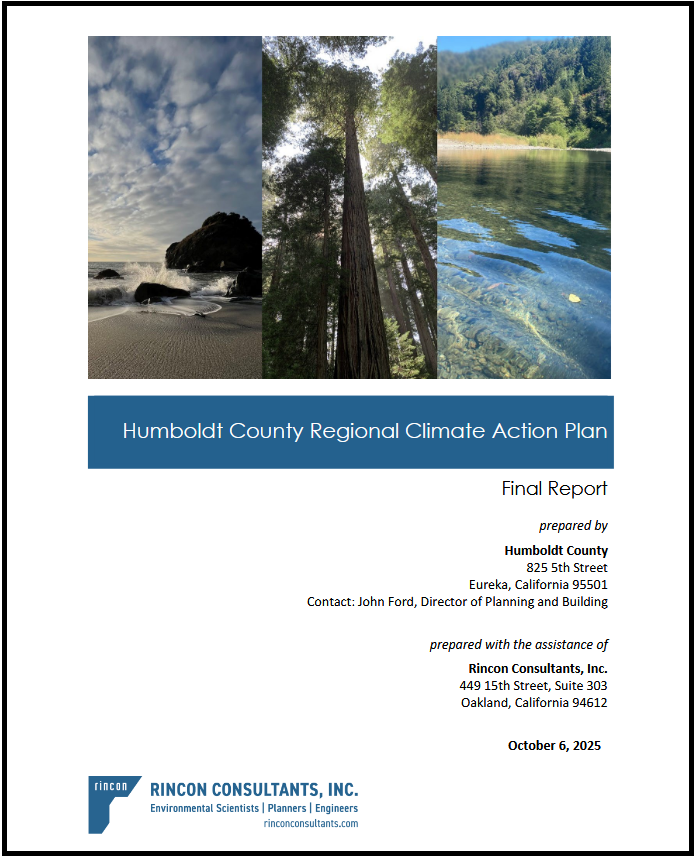
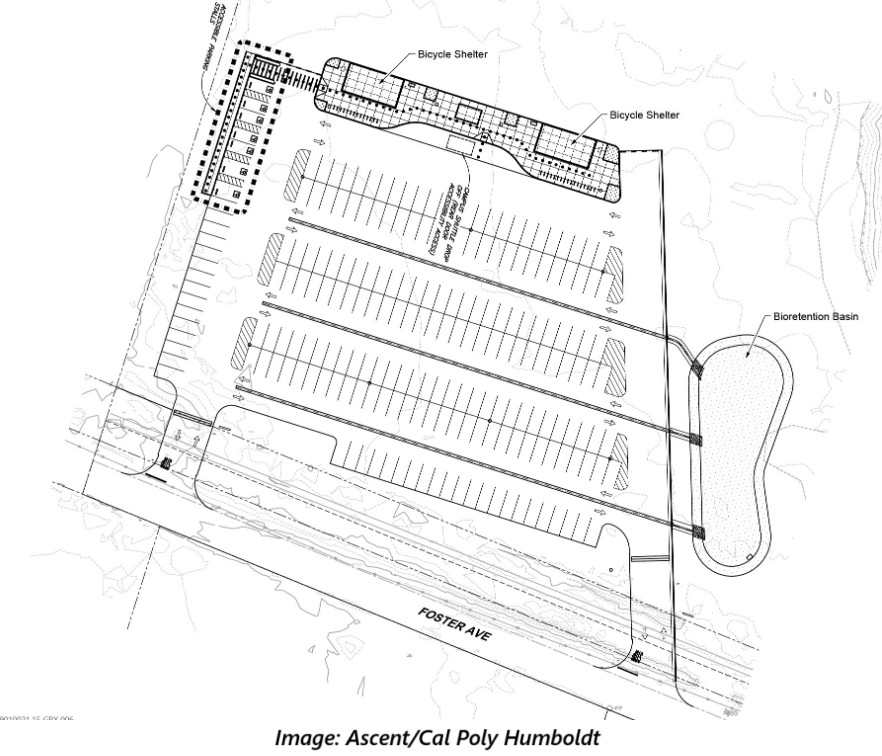
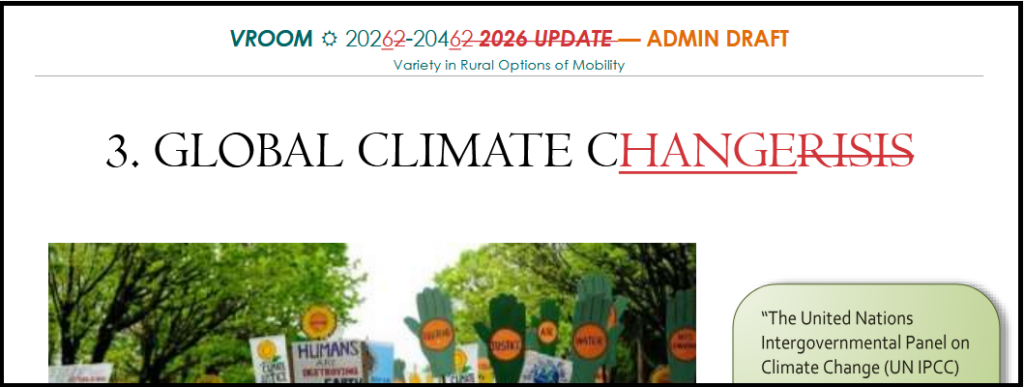
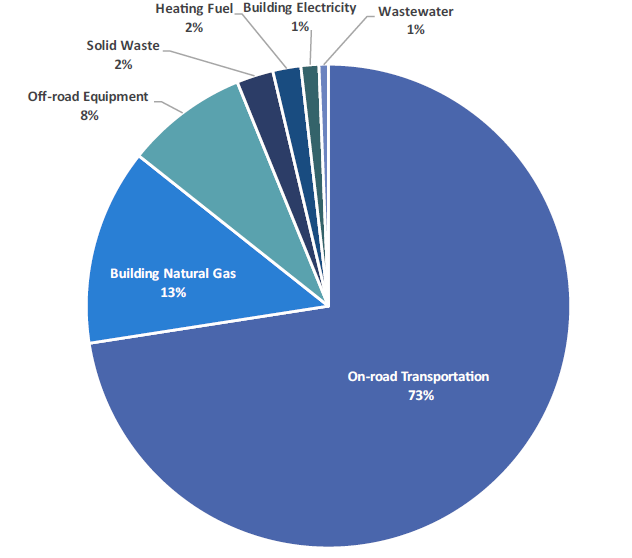

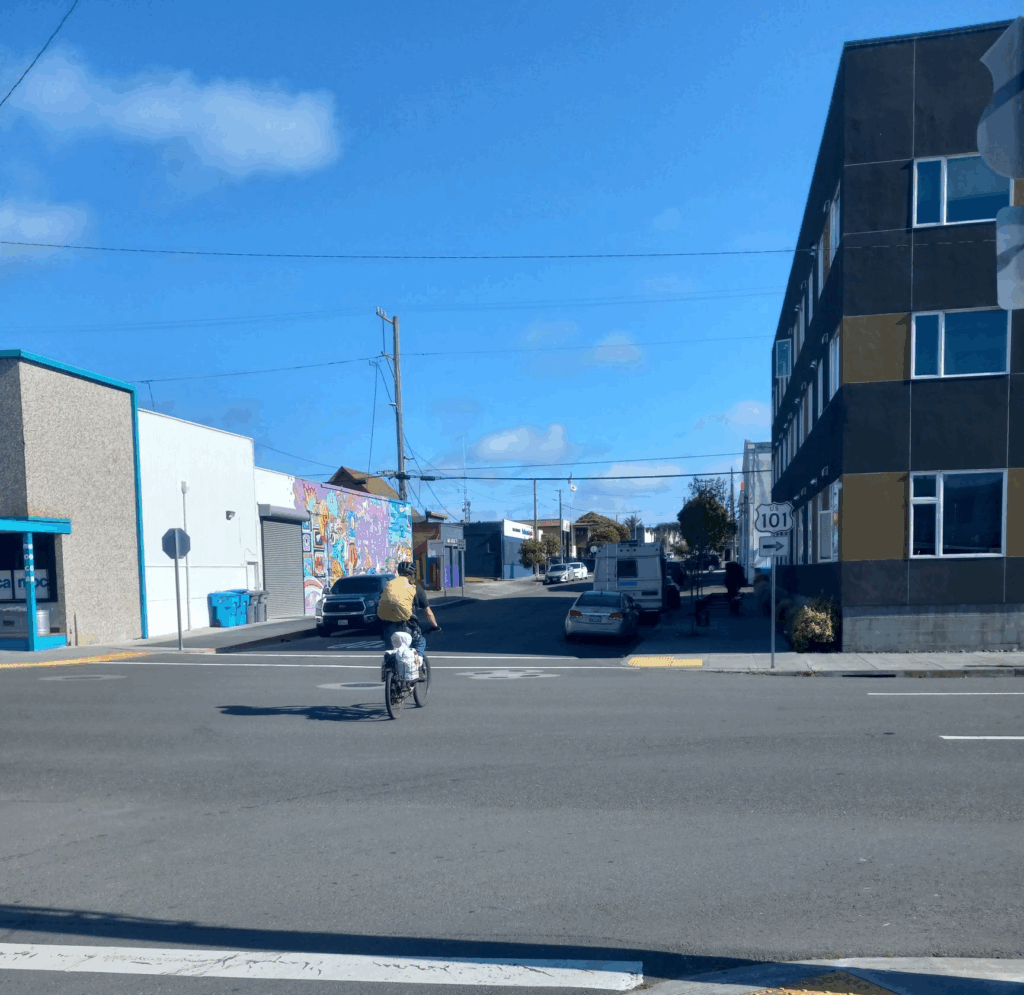
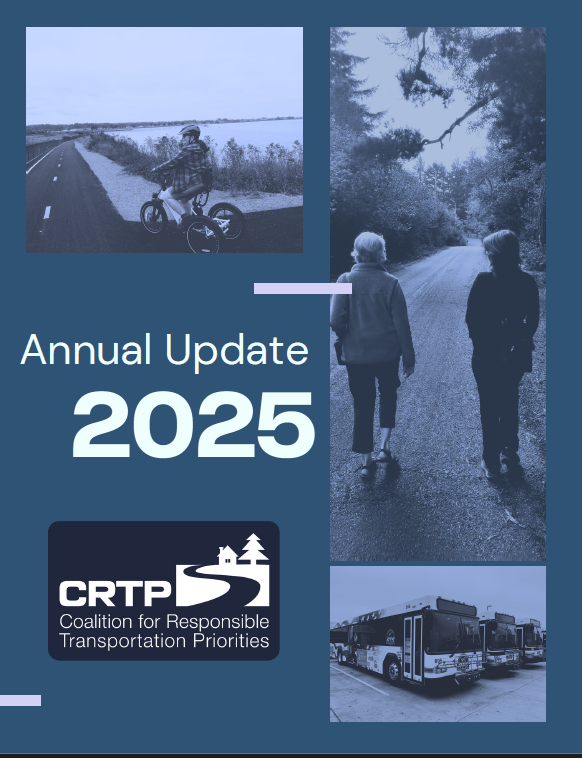
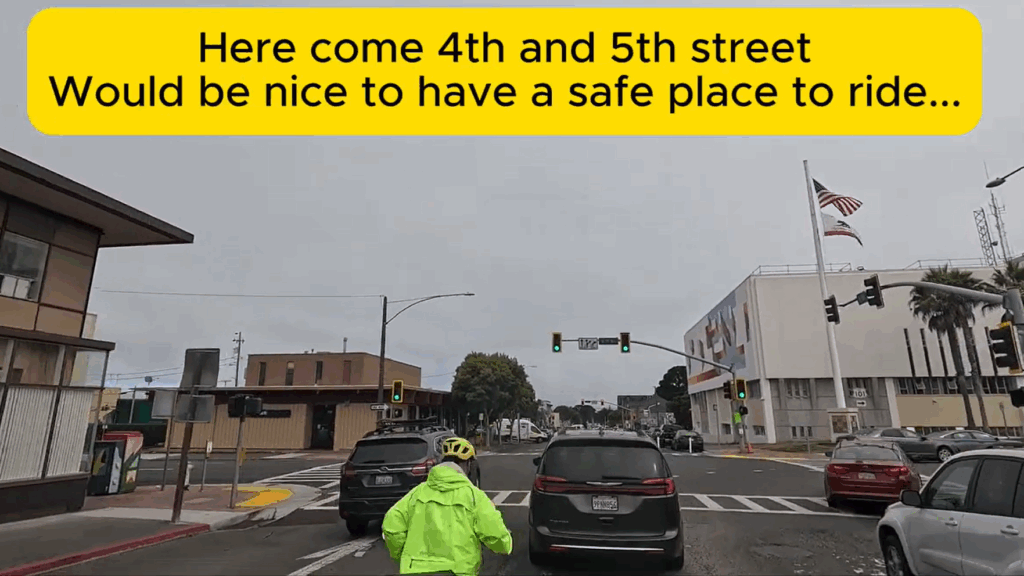
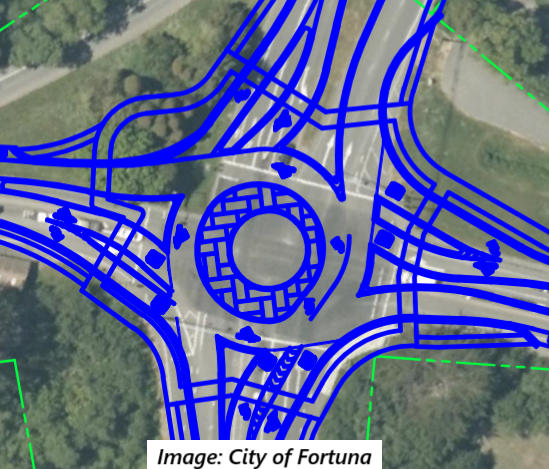
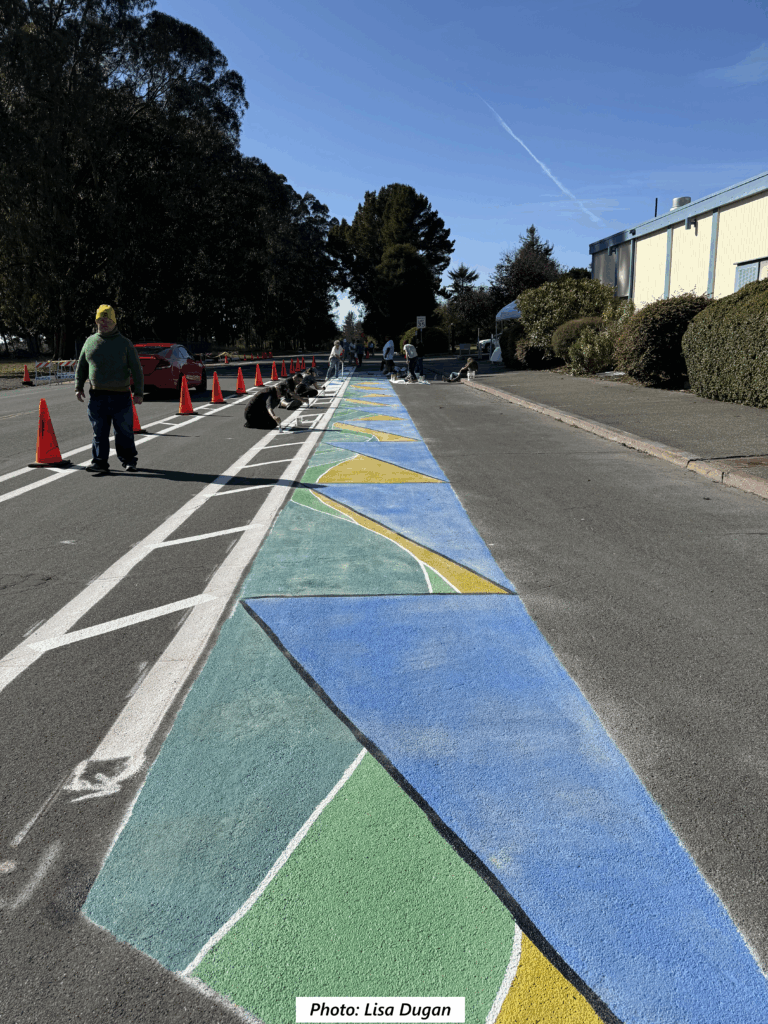
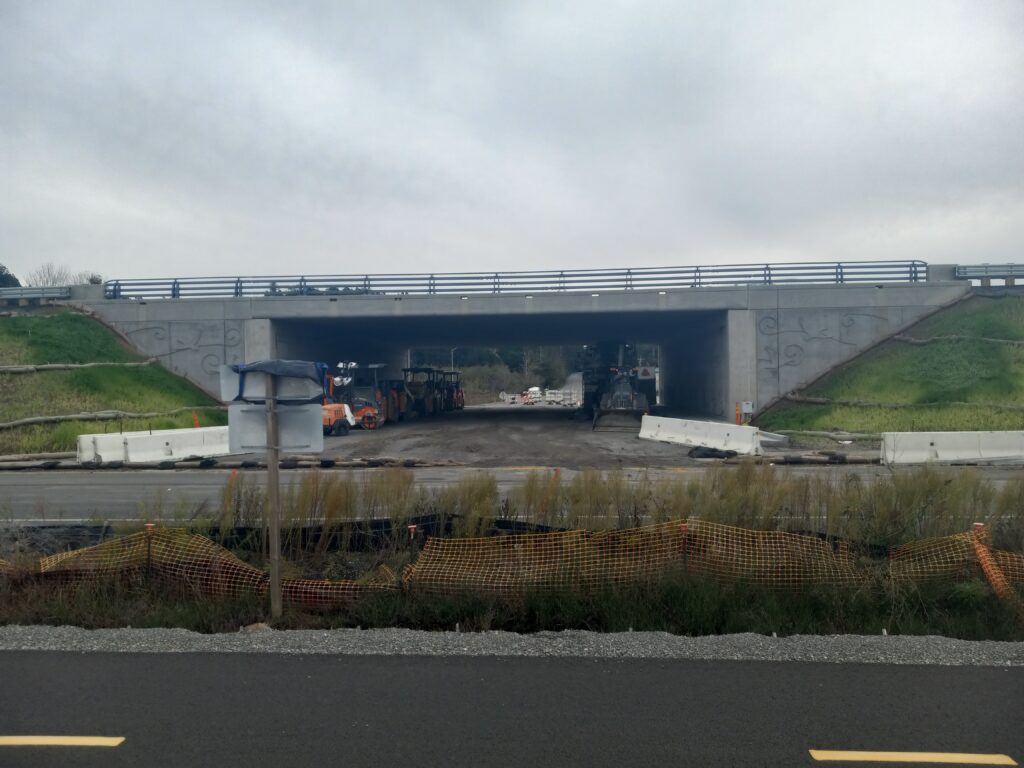
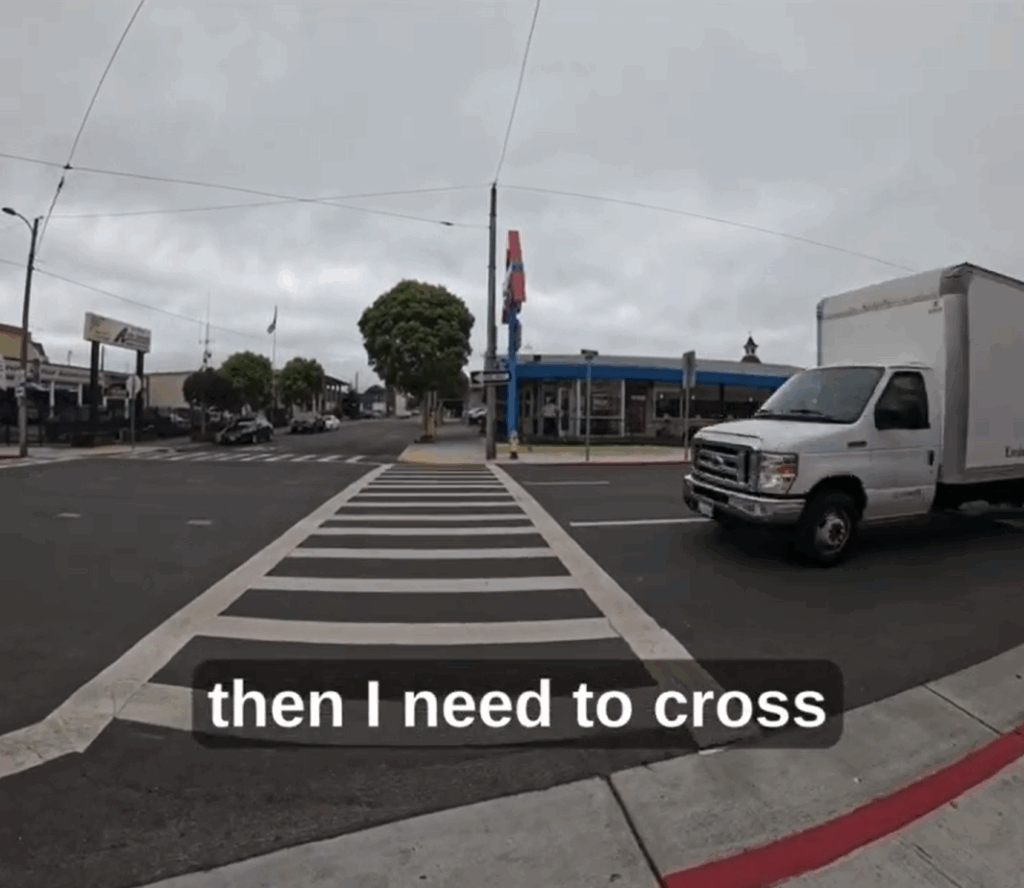

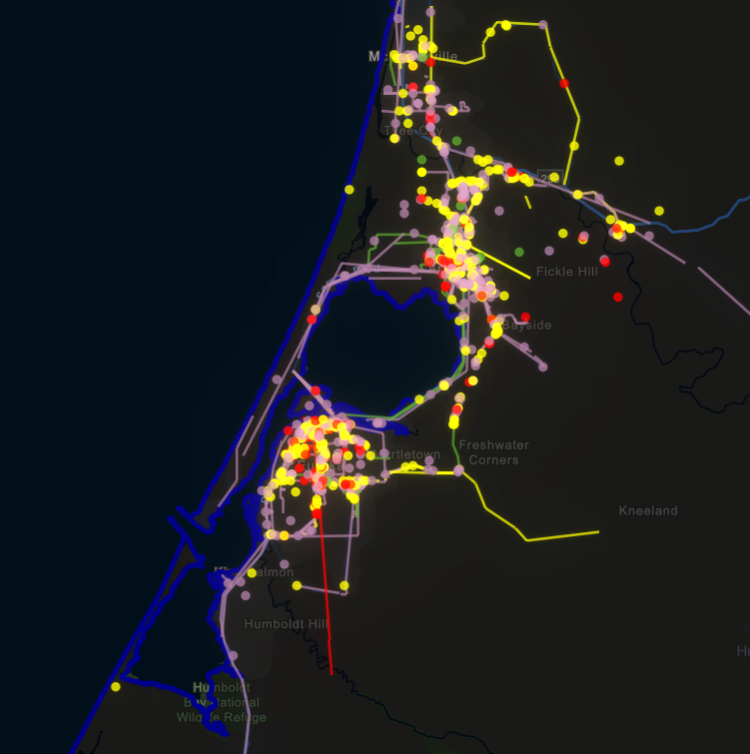
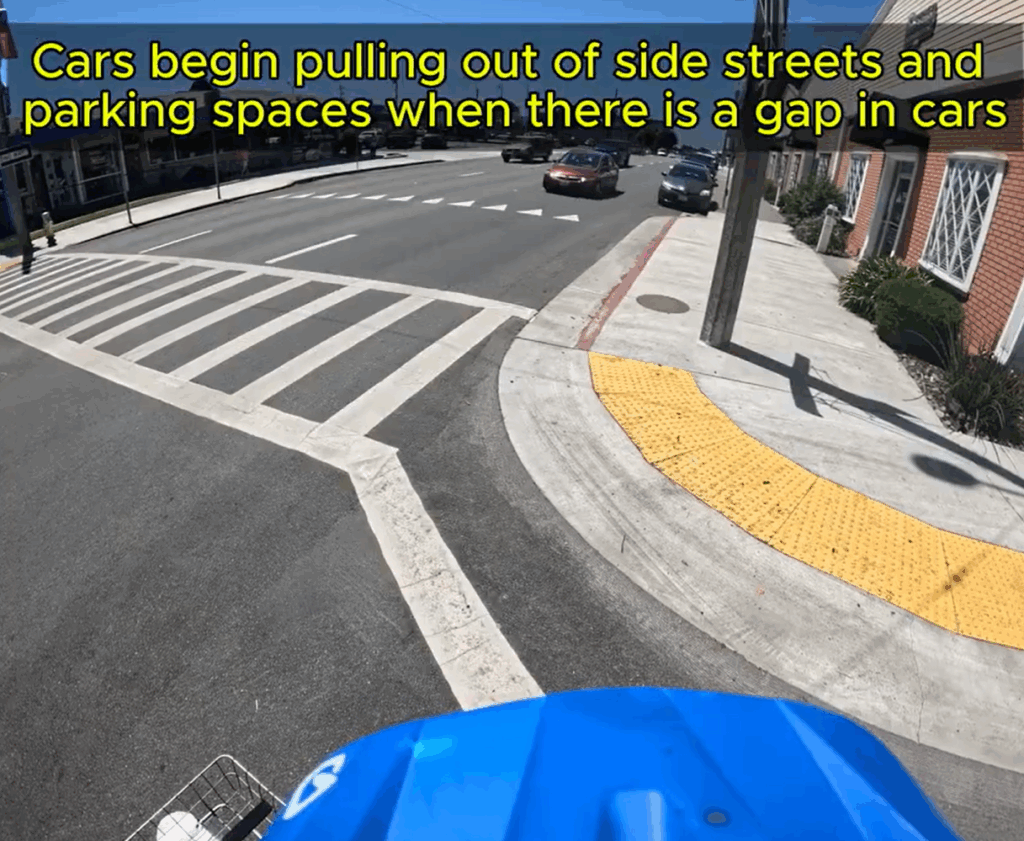
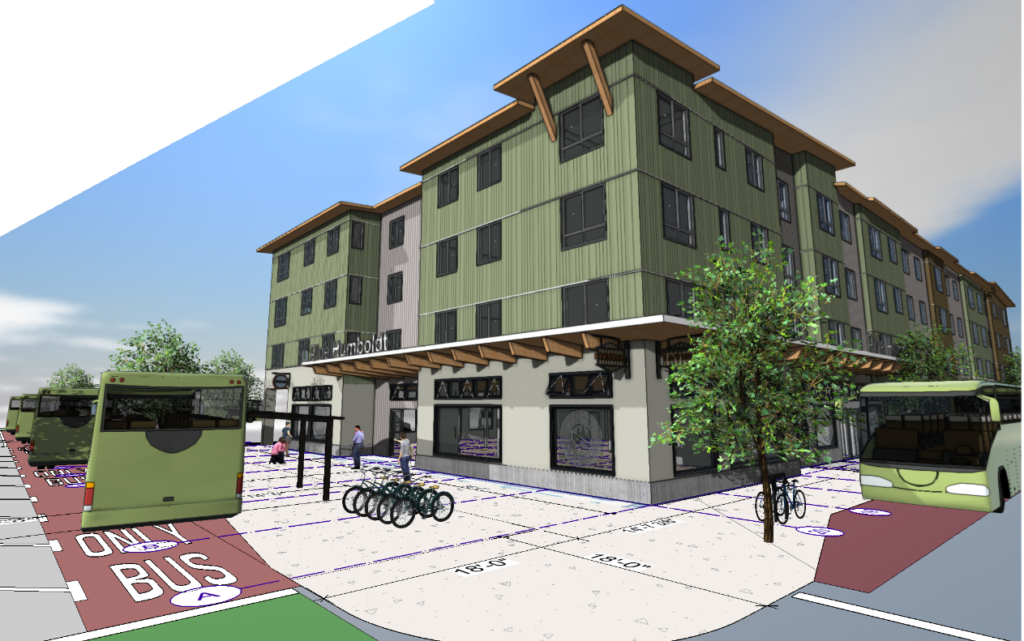
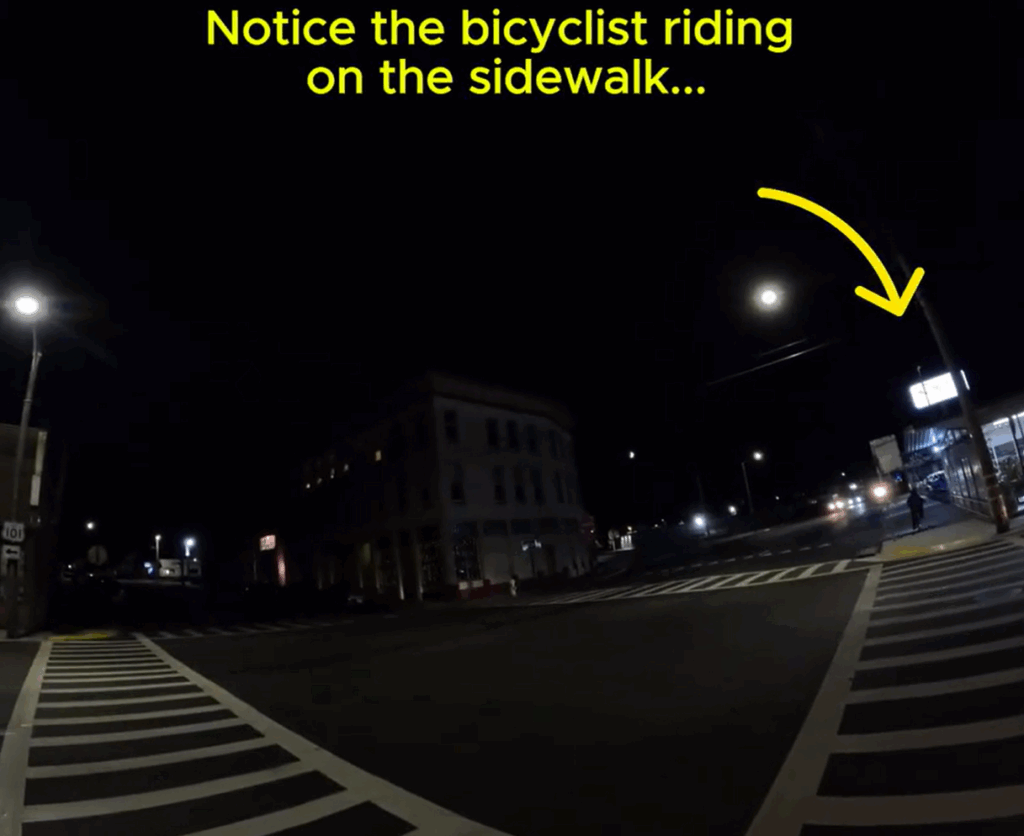

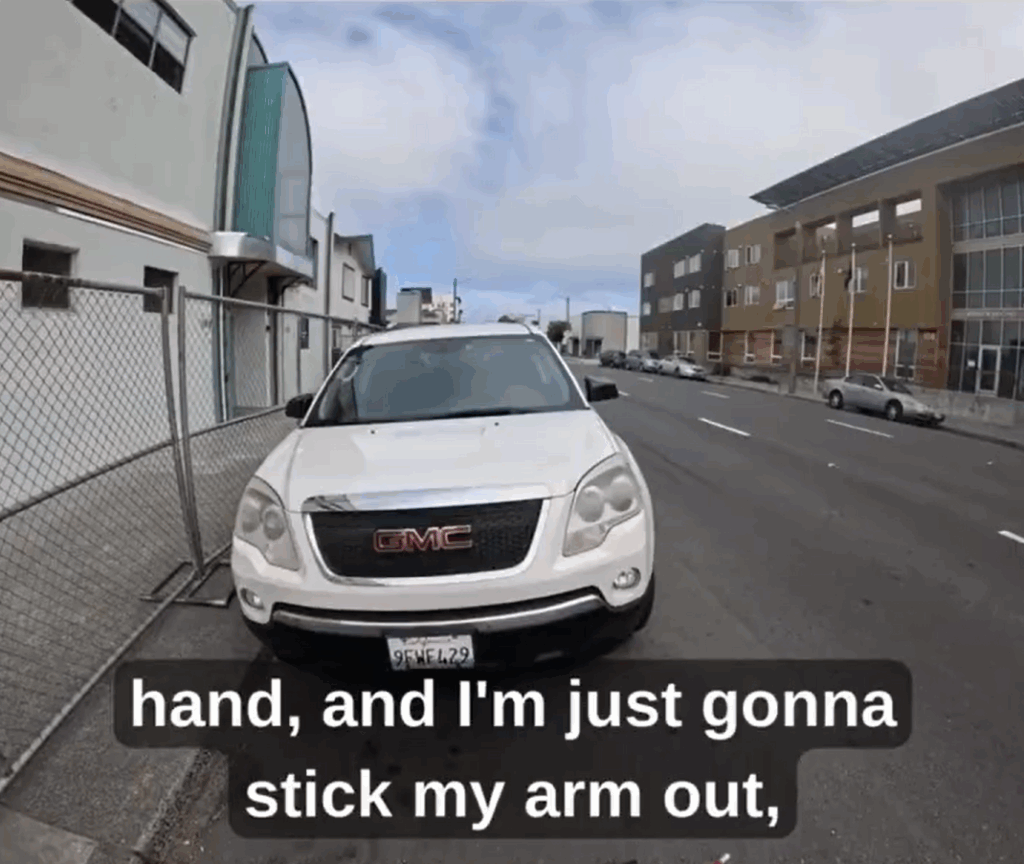
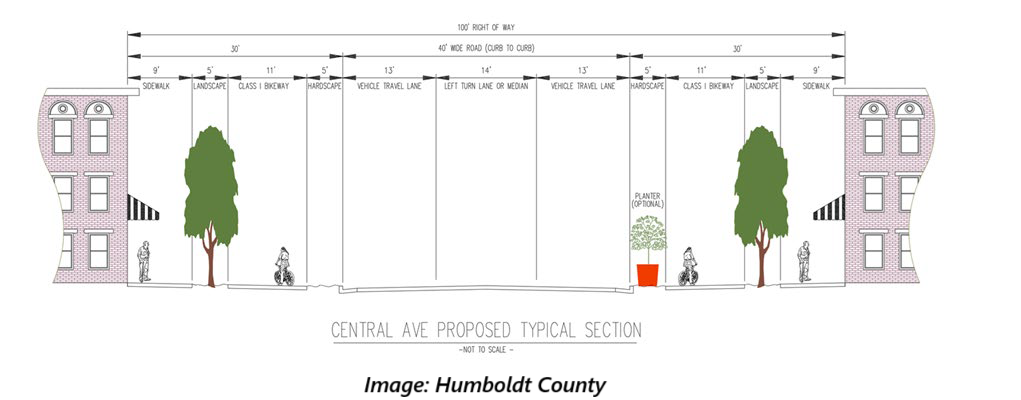
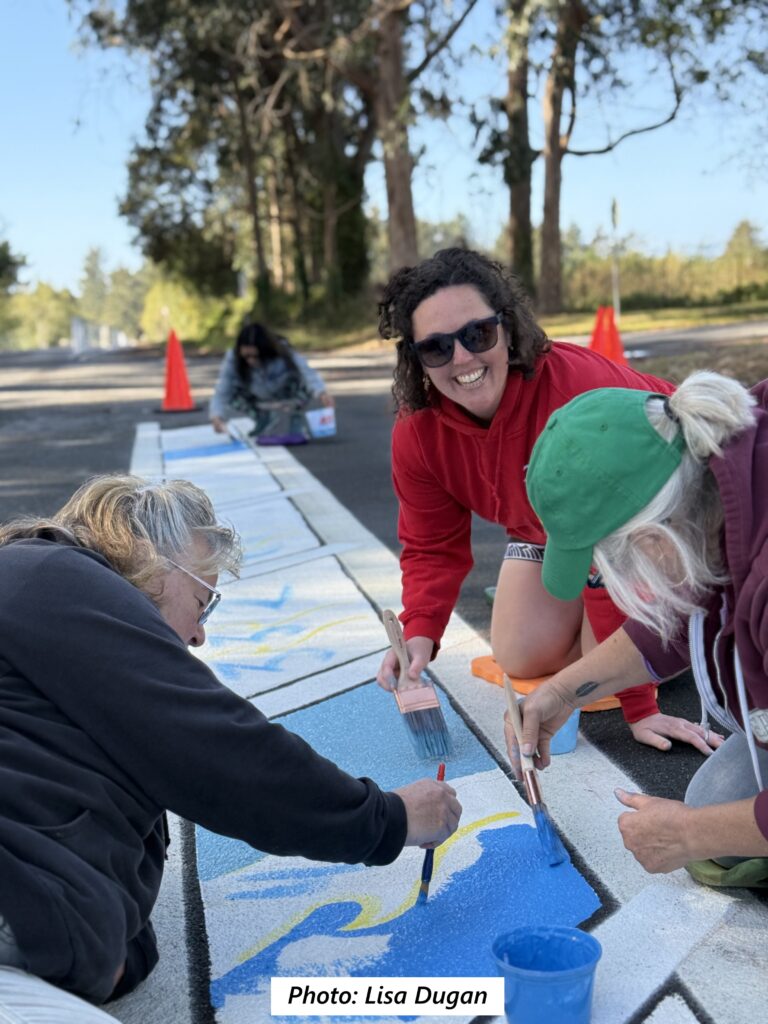
![A video screen shot shows a pickup truck looming large next to a sidewalk, with an intersection and traffic light visible in the background. Text reads "Would the driver even e able to see the child in front of or behind their truck?" and a caption says "[child making sounds]".](https://transportationpriorities.org/wp-content/uploads/2025/10/Screen-shot-from-6-year-old-video-1024x908.png)

